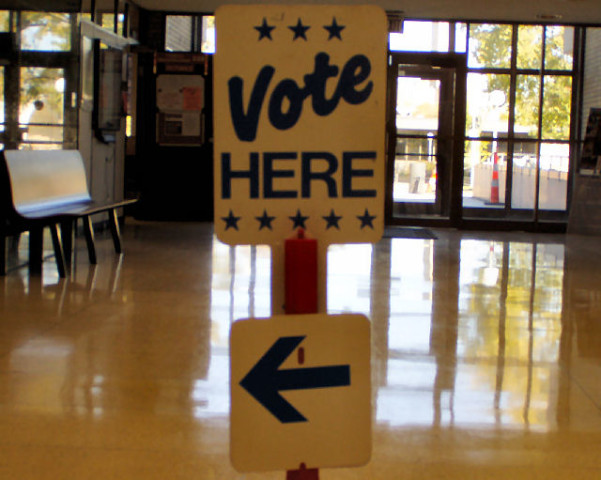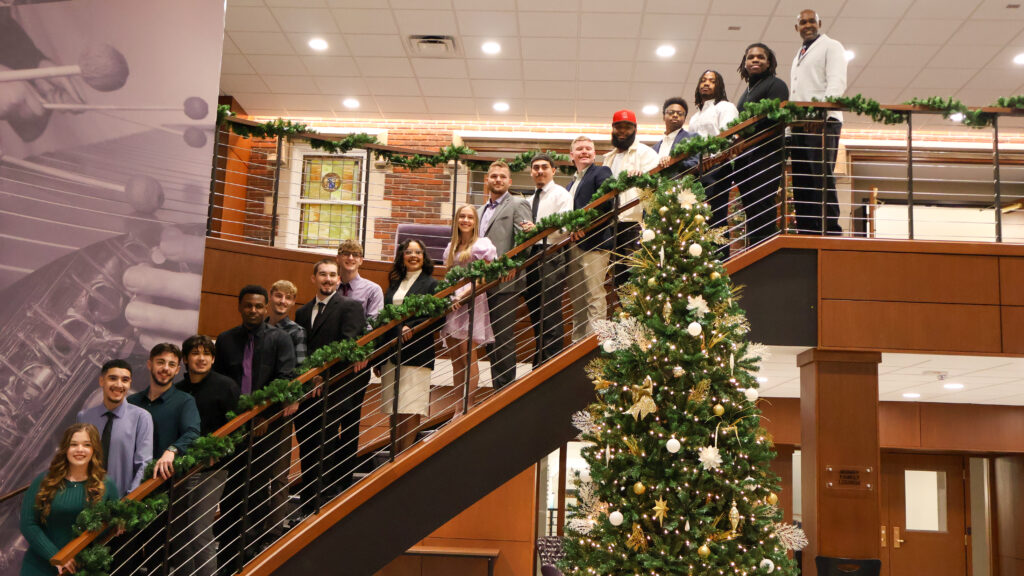Statistician Beth Clarkson has been in the news about her efforts to audit Sedgwick County voting machine tapes from the 2014 election. She presented a series of questionable statistical voting patterns linked with electronic voting machines at today’s K-State Salina Polytechnic’s Civic Luncheon.
Of concern, both Sedgwick County and Saline County use the same type of direct record electronic (DRE) voting machines that statisticians are finding problematic. They see a correlation between the kind of voting machine used and the percentage of Republicans in those precincts voting.
As a baseline, when paper ballots are counted, the percentage of both Republicans and Democrats who vote is the same, regardless of precinct size. In a graph, this appears as a flat horizontal line. With the Diebold and Sequoia brands of electronic voting systems used predominantly in Kansas, Clarkson sees:
• In very small precincts, which are often rural, a very high percentage of Republicans voting. (This is expected.)
• As precinct size increases, the percentage of Republicans voting decreases significantly for small (but not very small) precincts.
• Then, the trend shifts. In medium and large precincts, the percentage of Republicans who vote shows incremental increases with size and “never reaches a mean” (or comes to a flat line).
• Clarkson also included results for other brands of electronic voting machines that showed increases in the percentage of Democrats voting as precinct size increased. Any voting system that didn’t produce a straight line gives cause for auditing.
While New Mexico, New York and Wisconsin gain high markets for verifying their vote counts, Kansas—like most of the country—has an inadequate voting verification system. (New Mexico uses ballots that are scanned; after the election, these ballots are re-scanned to verify results.)
Clarkson said she reviewed data from the 2004 Presidential race in Ohio and noted a statistical relationship between the percentage of Republicans voting and the type of voting machine used. Recently, a US Congress investigation determined there was fraud. Clarkson said candidate John “Kerry should have won.”
Additionally, “red shifting polling results” are a concern. This occurs when “official vote counts in competitive election contests are consistently and significantly to the right of polling results including both pre-election and exit polls. This was assumed to be due to oversampling of Democrats but there is no empirical justification for that assumption.”
Voting machine software is proprietary. Clarkson stressed the need for this to be “open source software”. When questioned, she said one version was recently released by a California group. A Californian county will require the use of open source software in an upcoming election.
Clarkson noted “statistical analysis doesn’t show causation. Evidence consistent with a hypothesis of corruption is NOT proof. An audit is proof.”
Clarkson is suing Sedgwick County Election Commissioner Tabitha Lehman. This is a necessary step before a judge can unseal the DRE voting tapes from the 2014 election. Even then, Clarkson said that “some problems won’t be discernable” given the type of tapes kept. Having “a paper trail is crucial as is getting the system audited,” said Clarkson. She initially sued State Attorney General Derek Schmidt but subsequently learned he was not the correct person to sue. The judge allowed her to refile her suit and include Secretary of State Kris Kobach, but Kobach was recently dropped from the suit. Clarkson said she has put several hundred dollars of her own money into the suit so far. She is being assisted by a constitutional law attorney Randy Rathbun. She has set up a “go fund it” site. She’s been told to “expect to be charged for the privilege of doing this audit” (as records will need to be retrieved and perhaps duplicated).
Clarkson works full-time as the Chief Statistician for the National Center for Aviation Research. She worked the Veterans Day holiday in order to be able to speak in Salina at Noon. She will speak in Lawrence later in the afternoon.
Clarkson said she got interested in the topic when she was asked to do some polling. She’s devoted many evenings and weekends to this project. She said people tell her “she is brave”. They often tell her she is on to something, but they can’t lend their name or give specifics. She said she doesn’t feel brave but instead “feels like a crazy nerd who can’t let this go.”
Asked what can be done, Clarkson suggested:
• Ask for “paper please” when you vote.
• Lobby to improve local voting systems. If electronic voting machines are being used, open source software should be required.
• Require audits to insure the accuracy of voting results.
In her presentation, Clarkson referenced the article How to Rig an Election by Victoria Collier, published in Harper’s Magazine, November 2012. The US Congressional investigation on the 2004 Ohio presidential election race is also searchable on-line. Clarkson’s own website is www.showmethevotes.org.
Writer’s note: I thanked Clarkson for efforts and told her that decades ago, I’d been an election judge in Colorado where certain irregularities in the counting of absentee paper ballots surfaced; the then Secretary of State revoked several individual’s notary public seals. I hypothesized that perhaps the only hope was for elections to be won by wide margins. Clarkson replied that “in races where there are wide margins, it may not change the results, but I’m increasingly convinced that there are things going on all through the voting process.”
Clarkson had told the group that “election rigging has been going on for a long time”. She closed her presentation with this quote from Thomas Jefferson: “The price of freedom is eternal vigilance.”
—
Story by: Karen Shade for KSAL News
Copyright © Alpha Media, 2015. All Rights Reserved. No part of this story or website may be reproduced without Alpha Media’s express consent



